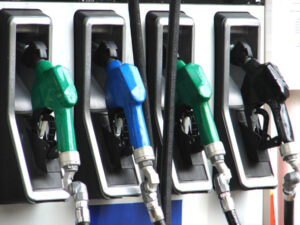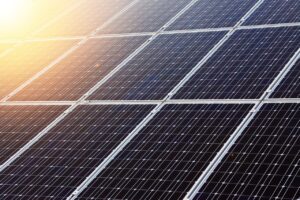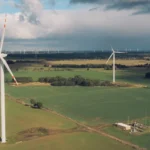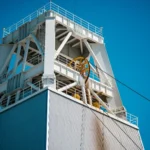The Polish energy mix must be sustainable, based on diverse sources of power and heat, with stable baseload generation for the National Power System, such as nuclear power, as well as with distributed generation sources and energy storage. However, the share of technologically advanced renewables, preferably weather-independent, should be as large as possible. By developing such an energy mix, we will ensure Poland’s energy sovereignty, said the Government Plenipotentiary for Renewable Energy Sources Ireneusz Zyska in an interview with BiznesAlert.pl.
BiznesAlert.pl: What does the Russian attack on Ukraine change in Poland’s energy and climate policy?
Ireneusz Zyska: After the attack of Russia on Ukraine, the masks fell off. We must become independent of energy supplies from Russia as soon as possible. An important part of the plan to derusify the Polish power industry is the development of RES and hydrogen technologies. We are working on a sustainable energy mix, that will guarantee the stability of energy supplies to end users at an acceptable price, as well as increase the competitiveness and innovation of the economy. In 2033 the Polish energy mix will, for the first time, include energy from a nuclear power plant, but there will still be space for bituminous coal and lignite, as well as for natural gas. However, despite that it will be renewables that will play the biggest role by then, as they will exceed 50 percent in the final gross energy consumption.
Renewables are still unstable.
As a rule, yes, but every day to a lesser degree. New technologies in the field of RES are constantly being developed and improved, and then implemented and commercialized, including in Poland. These processes are making renewables less dependant on the weather. Hybrid installations with energy storage extend the operating time of such sources to about half a year. PVs work for about 12 percent, and wind 35 percent of the time of the year. By contrast, once combined in hybrid installations, these technologies can reach a level of up to 60 percent. Hydropower and biogas plants work well in hybrid systems. It is also absolutely necessary to improve the energy efficiency of buildings. In the future, new buildings should be equipped with energy management systems, energy and heat storage, PVs, including installations built into the structural parts of buildings, as well as heat pumps. They should also meet high energy efficiency standards, reaching the level of energy-plus buildings. RES installations should be selected in accordance with the energy demand (balance) of the building, which means that PV installations cannot be oversized.
What do you mean?
The discount system adopted in 2016 was supposed to lead to a breakthrough in the development of distributed energy based on micro PV installations. It was a good idea, but the discounts themselves did not lead to the breakthrough. Only when the „Mój Prąd” program (My Power – ed.) was launched in 2019, did a huge increase in PV installations occur. A subsidy of PLN 5,000 was enough to encourage home owners to buy and set up a micro PV installation. This was followed by a tax relief for insulating buildings, where the beneficiaries could deduct up to PLN 53,000 from their tax base. Add to that the „Czyste Powietrze” pogram (Clean Air – ed.) aimed at encouraging people to insulate buildings and replace heating, as well as bankrolling PV installations. It all started to pay off. The surge in the number of prosumers exceeded the expectations of the creators of the „Mój Prąd” program. The discount system, together with the catalogue of support instruments, worked, but this model was good when we had 150, 300, or even 500 thousand prosumers, but not when we approached a million. The decision to change the billing system to net-billing had to be made. The public opinion was informed about this when in mid-2021 the government’s draft legislation on amending the Energy Law and other acts – no. UC74, was forwarded to public consultations.
That’s when the dispute started.
The media associated with the opposition attacked us, saying that we wanted to block the development of PVs, similarly to what had happened back in 2016 with onshore wind energy after the introduction of the Distance Act. Our arguments were presented in the explanatory memorandum and Regulatory Impact Analysis to the bill. A motion by Mrs Jadwiga Emilewicz was also submitted to the Sejm, but it did not get a majority. At that time, a group of PiS (PiS – Law and Justice, leading member of the ruling coalition in Poland – ed.) deputies led by Mr. Marek Suski submitted to the Sejm a draft law based on the draft prepared by the Sejm’s Committee on Energy, Climate and State Assets. The Ministry of Climate and Environment supported this solution, as it was the closest to the government’s UC74 project. The Sejm adopted the law on October 29, 2021. Thus, the market and RED II directives were partially implemented. The market directive requires member states to ensure that all energy consumers pay the same charges, including a variable distribution charge for the collection of energy from the grid. Meanwhile, prosumers who use the discount system do not bear those costs. The implementation of directives into the national legal order is compulsory. The net-billing system is slightly less profitable for prosumers, but socially fair. People affected by energy poverty, who for various reasons are unable to become prosumers, have so far paid more for energy from the grid than prosumers. It was a form of favoring prosumers over the worse-off non-prosumers. Under the new system, everyone is charged the same fees for getting energy from the grid, and prosumers pay lower energy bills than non-prosumers, mainly thanks to self-generation, increased self-consumption and storage. In turn, prosumers will be buying power on the same terms as other market participants at times when the generation from renewables installed on their roofs is low.
Is the new system cost-effective?
It’ll still pay off to be a prosumer. Mathematical models developed by scientists from the Wrocław University of Technology and experts from National Fund for Environmental Protection and Water Management (NFOŚiGW) show that a PV installation without additional components will yield a return on investment within 7.5 years, which, due to the general situation on the financial market, the lack of attractive investment instruments, seems to be a very good investment. The discount system encouraged prosumers to build oversized installations, which in practice caused a number of serious grid issues. Whereas, from the beginning the RES act assumed that the prosumer is the one who produces energy for their own needs. In the net-billing system, over-sizing the PV installation will not pay off.
Prosumers should not generate power for sale?
We can’t pretend to be an island. The prosumers are part of the National Power System and even with a small installation, they affect the larger whole by introducing low-voltage energy into the system. If it was one prosumer, it wouldn’t be a problem, but there’ll be a million of them in a minute. In February this year we have exceeded 900,000, and probably in April or may at the latest we will exceed one million prosumers. It creates challenges that weren’t there before. We need different network parameters. We want to continue to develop civic energy, and one piece of evidence for this is the fact that as of the 1st of April we have introduced the institution of a collective energy prosumer, and as of mid-2024 we will introduce a virtual prosumer. This opens up the PV market to tens of millions of new prosumers. However, the question has to be asked to what extent can we take responsibility for energy security away from large-scale generators? Already today, small RES, including prosumers and energy clusters, are developing quickly and will continue to grow. According to the expertise drafted by the AGH University of Science and Technology, prepared as part of the GOSPOSTRATEG KlastER project, energy clusters can balance energy supply, make network operation more flexible, and provide energy on demand. The energy mix cannot be random or spontaneous, it needs to be designed in a planned, coordinated and controlled way. However, today we place a different emphasis on energy security than we did a few years ago. As for the net-billing system, the best recommendation for its implementation is the support given by Francesco La Camera, Director General of the IRENA, who, during his visit to Poland on 16 December 2021, stressed that our approach was correct and introducing net-billing as a settlement system for prosumers was valid.
What does „Mój Prąd 4.0” contribute?
The program aims to improve the profitability of investments in prosumer installations. In my opinion, this is both – good continuation, as well as a new opening. We subsidize photovoltaics with the amount of up to 4,000 PLN for the installation of the panels themselves. If someone decides to buy other components, they will receive up to PLN 7,500 for home energy storage, up to PLN 5,000 for heat storage, and up to PLN 3,000 for an energy management system. Then, they will also receive an additional bonus for photovoltaics in the amount of PLN 1000. Energy storage for a family of four has a capacity of 4 kWh and costs about PLN 14,000. This technology can reduce the cost of operation of the entire installation. Heat storage, a hot water pump, is a 100 L tank that contains water for daily use and for heating the house. Whereas, the home energy management system will optimize energy consumption at home. The maximum support from the „Mój Prąd 4.0” program can reach up to PLN 20,500. This is about 50 percent of the cost of the entire installation, including all components.
Will the people succumb to the temptation?
This is a sufficient incentive for this type of investment for a Polish family. „Mój Prąd 3.0” offered PLN 3,000 for PVs and was very popular. We also want to encourage current prosumers to switch to net-billing. They will then receive a bonus of PLN 2,000 and will be able to use the funding for the remaining elements of the installation, funded by the „Mój Prąd 4.0” program. Prosumers who have not yet benefited from the subsidy will be able to receive a grant in the amount of PLN 5,000. We treat everyone equally. The initial budget for „Mój Prąd 4.0” is PLN 350 million, but we are prepared to increase it. The first money will come from REACT-EU, but there will be other sources. It was decided that in subsequent editions the „Mój Prąd” program, as well as the „Czyste Powietrze” program, should include a PV component with a subsidy of up to PLN 5,000 when replacing the heating source and that support should continue. Our goal is to improve the energy efficiency of buildings, ensure clean air and reduce energy and heating bills. By raising the standard, we want to reduce the cost of living for households.
What will be the consequences from the point of view of Poland’s energy security?
The enormous growth of RES in Poland is a fact. In 2015, we had a trace amount of PVs, 4,050 prosumers and 25 MW of installed PV capacity in micro-installations, and the total RES capacity was approx. 7 GW. In February 2022, the number of prosumers exceeded 900 thousand, and the total installed capacity of all RES exceeded 17.5 GW. Over the past four years, we have done a great deal of work together with the Energy Regulatory Office, the operators of the electricity transmission and distribution system. A total of around 11 GW of capacity has been contracted in RES auctions over the past four years, including 5 GW in PV and 4.6 GW in onshore wind energy. These agreements have been already signed and are mutually binding, which means in the coming months they will have to be built and launched. There are still projects outside the auctions with awarded connection conditions. In three years, in 2025, the installed capacity of RES in Poland will reach about 28 GW. That’s 11 GW within three years. Then, from 2025, we will start constructing offshore wind farms on the Baltic Sea to reach 6 GW of installed capacity. New renewable energy sources will be also added onshore, including biogas, biomethane and biomass installations, heat pumps and hydroelectric power, including pumped-storage hydroelectricity. In 2030, we may exceed 50 GW of installed capacity and 50 percent of final gross energy consumption from RES. The amendment to the RES Act, which we are currently working on, is intended to extend the deadlines for the implementation of projects contracted in RES auctions for PVs from 24 to 33 months, to introduce a change in the definition of a hybrid installation and an energy cluster. Clusters are to be exempted from RES and cogeneration charges, excise duties and the obligations related to certificates of origin. There will be fewer administrative obligations, and solutions will be proposed to increase the share of RES in the heating sector. We are carrying out advanced work together with NFOŚiGW on a new program to support the development of the heat pump sector, including using the potential of shallow geothermal energy. Renewables will become more prevalent in the economy.
Therefore, it is necessary to go back to the issue of RES stability.
Due to the surge in RES we need a stable baseload. This is an important issue from the point of view of energy security of the country. In my opinion, the construction of nuclear power should be speeded up as much as possible, and the efficiency of coal-fired power plants should be ensured. By the time the atom appears in our energy mix, we need to have efficient and trouble-free carbon units. Unfortunately, some of them, for technical reasons, will have to be turned off after 2025. Steps should also be taken towards the rapid construction of high-efficiency gas and gas-steam units for gas outside Russia. We should also include the share of stable renewables, such as biogas, biomethane and biomass. Polish agriculture has great potential for the development of the biogas and biomethane sector.
How come?
In this case we can count on the leaders of the fuel market, such as PKN Orlen which has a huge program for developing biomethane plants. Scientific research on the development of this technology is ongoing. Agricultural biogas plants, whether using biogas from wastewater or waste treatment plants, are another significant source of renewable energy. We can develop this potential. If we produce 1 to 1.5 billion cubic metres of biomethane in 2030, it will be a great success. It will be an additional billion, maybe 1,5 billion of gas, which we will not have to import, as the supply in Poland will go up. And the potential is much greater – up to 8 billion cubic meters of biomethane per year, which can be used for energy and transport fuels. At the same time, we are working on an amendment to the Energy Law, so as to offer support for retrofitted installations from 25 to 100 percent, and further support not lower than 25 percent of the value of a new reference unit of the same type. We also want to change the definition of gaseous fuels to include renewable gases. In this way, we will avoid an additional cost of PLN 17 billion that we can spend on RES, and this money would add about 5 GW in PV or 3 GW in wind power. This is a great opportunity for the Polish countryside and agriculture.
What else?
Pumped-storage plants (5-6 units) with a capacity of approx. 4.5 GW, will store energy and allow very quick start-up of electricity production in emergency situations. Power generation based on natural gas from various sources, as well as domestic biomethane will stabilize onshore wind farms. In addition, an extremely important element of the Polish energy and heating sector, as well as transport, will be low-and zero-emission hydrogen, which will largely come from energy generated from RES. As the Government Plenipotentiary for Renewable Energy Sources, I will say that renewable energy is freedom energy. It should be used to greater degrees in the energy war that Putin started against the entire free world, and especially Central and Eastern Europe. Responsibility and concern for Poland’s energy security force us to accept that renewables alone will not be enough. Our energy mix must be sustainable, based on diverse sources of electricity and heat, with sources providing stable baseload generation for the National Power System, such as nuclear power, as well as with distributed generation sources and energy storage. However, the share of technologically advanced renewables, preferably weather-independent, should be as large as possible. By developing such an energy mix, we will ensure Poland’s energy sovereignty.
Interview by Wojciech Jakóbik









